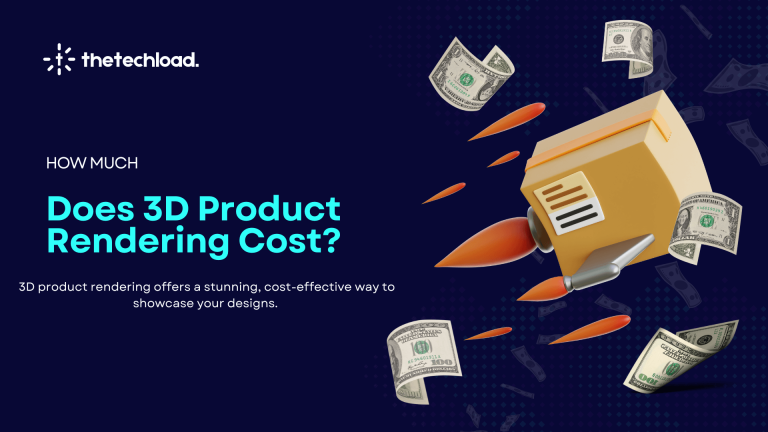When starting an Amazon business, one of the first questions that comes to mind is: how to source products and find inventory for selling? Sourcing products to sell on Amazon is an essential step in building a successful online business. Millions of products are available on the platform, finding the right ones to sell can be challenging. With effective sourcing strategies or by the help of an amazon product sourcing service, you can easily identify profitable and in-demand products that will give you an edge in the highly competitive Amazon marketplace. In this blog, we will explore the best sourcing strategies for Amazon product sourcing and provide you with valuable tips to help you find success on the platform. Get ready to optimize your Amazon business with our expert tips and insights!
What is Product Sourcing?
Product sourcing refers to the process of finding and procuring products for selling. In the context of Amazon, this could involve purchasing from manufacturers, wholesalers, or through retail arbitrage (buying goods from other retailers and reselling them on Amazon). The goal of product sourcing is to find high-quality products at competitive prices that will appeal to Amazon shoppers and will stand out in the competitive marketplace.
Building a successful Amazon business requires careful consideration and strategic planning. It is an essential element that demands attention to detail and thoughtful execution.That’s why it’s important to understand the best sourcing strategies for Amazon and how to implement them effectively.
What are the various business models available on Amazon?
First, it’s important to identify which business model you want to use for product sourcing. In addition to sourcing products, there are various business models that you can utilize on Amazon.
Here are the most common methods that Amazon sellers need to acquire their products:
- Retail Arbitrage
This involves buying products from retail stores at a discounted price and then reselling them on Amazon for a profit.
- Online Arbitrage
Similar to retail arbitrage, this involves buying products online from platforms like eBay or Walmart and reselling them on Amazon.
- Wholesale
This model involves purchasing products directly from manufacturers or distributors at a discounted bulk price and then selling them on Amazon for a profit.
- Private Label
This involves sourcing products from manufacturers, adding your branding and packaging to them and selling them under your brand on Amazon.
- Dropshipping
This model eliminates the need for inventory management as you list products on Amazon that are shipped directly from suppliers to customers.
If you’re launching a business with a lower budget or investment, models like dropshipping may be a better fit for you. On the other hand, if you have a higher capital or investment, creating your Private label brand on Amazon can be a captivating business choice.
It’s essential to research and understand these different business models to determine which one best suits your goals and resources. You can also utilize a combination of these models for your Amazon business.
Key Strategies for Amazon Product Sourcing
Now that we have discussed the basics of Amazon product sourcing, let’s explore some of the best strategies to help you source products effectively and efficiently:
Conduct Market Research
The first step in any successful Amazon product sourcing strategy is to conduct thorough market research. Market research plays a vital role in product sourcing for Amazon. It helps sellers gain a deep understanding of the market dynamics, customer preferences, and competitive landscape. By conducting market research, sellers can:
- Identify Profitable Niches: Market research helps sellers identify profitable product niches with high demand and low competition. By analyzing market trends and customer behavior, sellers can discover untapped opportunities and select products that have the potential to generate significant sales.
- Understand Customer Needs: Effective market research enables sellers to understand their target audience’s needs, preferences, and pain points. By identifying customer demands, sellers can source products that fulfill those needs and offer unique value propositions, leading to higher customer satisfaction and increased sales.
- Evaluate Market Viability: Market research helps sellers evaluate the viability of sourcing a particular product. By analyzing factors such as market size, growth potential, and competition, sellers can make informed decisions about whether a product is worth sourcing and selling on Amazon.
- Stay Ahead of Competitors: Continuous market research allows sellers to stay updated on the latest industry trends, competitor strategies, and consumer preferences. By monitoring the market, sellers can identify emerging trends, adapt their sourcing strategies, and stay ahead of the competition.
- Optimize Pricing and Positioning: Market research provides insights into the pricing strategies of similar products in the market. By analyzing competitors’ pricing, sellers can make informed decisions about pricing their products competitively to attract customers while maintaining profitability.
By conducting thorough market research, sellers can minimize risks, identify profitable product opportunities, and make data-driven decisions when sourcing products to sell on Amazon.
Attend Trade Shows and Exhibitions
Attending trade shows and exhibitions is an excellent way to connect with potential manufacturers and suppliers for your Amazon business. These events allow you to network, negotiate deals, and get a hands-on look at products before sourcing them.
Before attending a trade show or conference, it’s important to do your research. Find out which exhibitors will be attending and identify the ones that are relevant to your product niche. This will help you prioritize your time and focus on the suppliers and manufacturers that are most likely to have the products you’re interested in.
Some popular trade shows for sourcing products include the Canton Fair in China, ASD Market Week in Las Vegas, and the Global Sources Summit in Hong Kong. Attending these events can give you a competitive edge in sourcing high-quality products for your Amazon business.
Contact Manufacturers Directly
Contacting manufacturers directly is another effective sourcing strategy for Amazon. This allows you to cut out the middleman and negotiate better prices with suppliers. You can use platforms like Alibaba, AliExpress, or ThomasNet etc. to find manufacturers and reach out to them directly for potential partnerships.
These platforms allow you to search for products based on your specific requirements and connect directly with the manufacturers. This approach requires more effort and negotiation skills but has the potential for significant cost savings in sourcing products.
When contacting manufacturers directly, it’s important to consider the pros and cons. The advantages include better pricing, the ability to customize products, and the opportunity to establish long-term partnerships. However, there may be challenges such as language barriers, minimum order quantities, and potential scams. It’s important to thoroughly research and vet the manufacturers before making any commitments.
Negotiate with Suppliers
Regardless of which sourcing strategy you choose, negotiating with suppliers is essential for securing the best possible deals. You can negotiate on factors like price, minimum order quantities, shipping costs, and payment terms to ensure a win-win situation for both parties.
Highlight the benefits that you can offer to the supplier. This could include factors such as a large customer base or the potential for long-term collaboration. By showcasing the value you bring, you can negotiate better terms and pricing.
During negotiations, consider exploring alternative options or solutions. This could involve discussing different pricing structures, exploring customization possibilities, or suggesting changes to shipping arrangements.
Negotiations often involve some level of compromise. Be prepared to give and take, and be open to finding middle ground. By being flexible and understanding, you can reach agreements that satisfy both parties.
Remember, negotiation is a skill that improves with practice. Effective negotiation skills can lead to significant cost savings and better deals in sourcing products for your Amazon business.
Partner with Brands or Distributors
In Amazon’s wholesale business model, partnering with established brands or distributors can also be a successful sourcing strategy for Amazon sellers. By collaborating with well-known brands, you can offer high-quality products and tap into their existing customer base. When approaching brands or distributors, emphasize the value that you can bring to the partnership.
Sourcing from established brands or distributors involves forming partnerships or agreements to purchase and sell their products. This approach may require more effort in building relationships and negotiating deals, but it can lead to long-term partnerships and significant growth opportunities for your business.
Remember, partnering with brands or distributors can provide you with access to quality products, established customer bases, and marketing support. It is important to establish strong relationships and negotiate mutually beneficial terms to maximize the success of your Amazon business.
Partner with Dropshippers
Dropshipping is a business model where the supplier ships products directly to customers on behalf of the seller. This eliminates the need for you to hold inventory and manage shipping, making it a convenient sourcing option for Amazon sellers.
You can find dropshipping suppliers through platforms like Oberlo, SaleHoo, or AliExpress. However, be careful of choosing reputable suppliers to ensure timely delivery and quality products for your customers.
It’s important to continuously monitor the performance of your dropshipping partnership. Regularly review metrics such as customer satisfaction, order accuracy, and shipping times. If any issues arise, address them promptly and work with your dropshipping supplier to find solutions.
Utilize Online Retail Arbitrage
Online retail arbitrage is a popular strategy for sourcing products to sell on Amazon. It involves sourcing products from online retailers at a lower price and reselling them for a profit on Amazon. This can be an effective online arbitrage sourcing strategy, especially for new sellers with limited capital.
Make sure to take into account the fees and costs associated with selling on Amazon, such as referral fees, fulfillment fees, and shipping costs. Calculate your potential profit after deducting these expenses to ensure a viable arbitrage opportunity.
This strategy requires less physical effort but does require more time spent researching and comparing prices across different online platforms.
Conclusion
In the highly competitive landscape of Amazon selling, your sourcing strategies can make or break your success. Product sourcing for your Amazon business requires a combination of market research, networking, and leveraging advanced tools and strategies. With the tips and insights shared in this article, you now have a comprehensive guide to diverse sourcing methods for sourcing amazon products, product sourcing for amazon fba, sourcing from alibaba for amazon; including negotiating with suppliers, utilizing online marketplaces, partnering with brands or distributors, to implementing the dropshipping business model.
By implementing our expert tips of Amazon product sourcing, you can now source profitable products and build a successful online business on the platform.
Remember, there isn’t a one-size-fits-all strategy when it comes to sourcing products for Amazon. It requires continual learning, experimenting, and adapting to shifts in market trends. No matter the strategy you choose, the key is to ensure product quality, profitability, and meeting customer demands.





